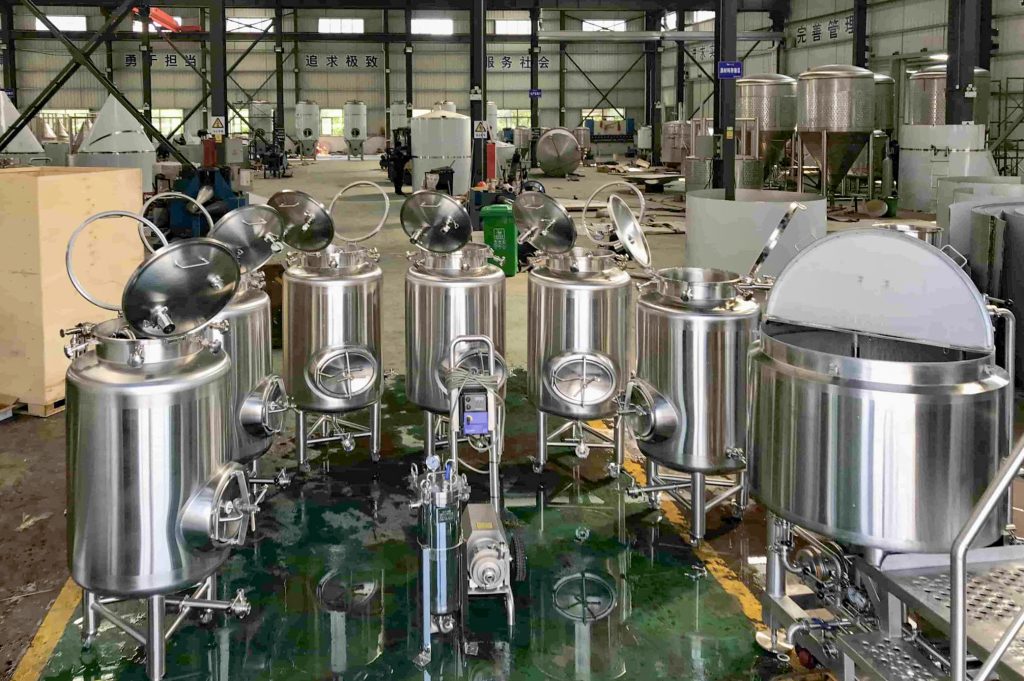Introduction

Kombucha has gained immense popularity among health-conscious individuals and beverage enthusiasts. Brewing your own kombucha at home can be a fulfilling journey, offering the chance to explore various flavors and control the fermentation process. However, selecting the right kombucha brewing equipment is essential for achieving delicious and consistent results. In this article, we’ll delve into the necessary kombucha brewing equipment, the various options available, and tips for choosing the right tools for your brewing adventure.
Understanding Kombucha Brewing Equipment
Before we explore the specifics, it’s important to grasp what kombucha brewing equipment entails. The process of brewing kombucha involves fermentation, which requires specific tools and supplies to ensure a successful batch. Below, we’ll outline the core components of kombucha brewing equipment.
Essential Components of Kombucha Brewing Equipment
- Fermentation Vessel
- The fermentation vessel is where your sweet tea mixture and SCOBY (Symbiotic Culture of Bacteria and Yeast) come together. This vessel must be non-reactive and can be made from materials like glass, ceramic, or food-grade plastic.
- SCOBY
- The SCOBY is a vital component of kombucha brewing equipment. This gelatinous culture contains the necessary bacteria and yeast to transform sweet tea into kombucha. Without a SCOBY, you cannot brew kombucha.
- Starter Tea
- Starter tea is essential for successful fermentation. It is the liquid from a previous batch of kombucha that helps to acidify the new mixture, promoting a healthy fermentation process.
- pH Strips
- Monitoring the pH level is crucial in kombucha brewing. pH strips help ensure your kombucha stays within a safe acidity range, impacting both the fermentation and flavor.
- Bottling Equipment
- After fermentation, you need appropriate bottles for storing your kombucha. Glass bottles with airtight seals are recommended, as they allow for carbonation while reducing the risk of contamination.
Additional Tools and Accessories
While the essentials are important, additional tools can enhance your kombucha brewing experience:
- Funnel: Helps transfer liquids without spilling.
- Mesh Strainer: Filters out tea leaves and solids.
- Thermometer: Monitors temperature for optimal fermentation conditions.
- Brewing Kit: Many retailers offer comprehensive kombucha brewing kits that include all necessary equipment.
Choosing the Right Fermentation Vessel
Types of Fermentation Vessels
When selecting a fermentation vessel, consider the material options available:
| Material | Pros | Cons |
|---|---|---|
| Glass | Non-reactive, allows visibility | Breakable, can be heavy |
| Ceramic | Attractive, non-reactive | Can be costly, potential lead in glazes |
| Food-Grade Plastic | Lightweight, durable | May scratch, not as long-lasting |
Recommended Sizes
The size of your fermentation vessel is critical and depends on your brewing goals:
- 1-gallon: Suitable for beginners or small batches.
- 2-5 gallons: Ideal for regular brewers who wish to experiment or share.
The Importance of Quality Ingredients
Selecting Your Tea and Sugar
The flavor of your kombucha heavily depends on the quality of the ingredients you choose. Here are tips for selecting the best:
- Tea: Opt for high-quality, organic teas. Black, green, and herbal teas can all be used effectively in kombucha brewing.
- Sugar: White granulated sugar is commonly used and easily fermentable. Some brewers experiment with alternatives, but ensure they are suitable for fermentation.
Maintaining Your Kombucha Brewing Equipment
Cleaning and Sanitizing
Proper maintenance of your kombucha brewing equipment is vital to prevent contamination. Follow these steps:
- Wash: Use hot, soapy water to clean all equipment thoroughly.
- Rinse: Ensure no soap residue remains.
- Sanitize: Apply a food-safe sanitizer to kill any lingering bacteria.
Storing Your Equipment
When not in use, store your kombucha brewing equipment in a clean, dry space to avoid contamination and damage.
Troubleshooting Common Issues

Even with careful preparation, issues may arise. Here are some common problems and solutions in kombucha brewing:
Problem: SCOBY Behavior
- Floating or Sunken SCOBY: This can be normal. A floating SCOBY might be due to trapped gas, while a sunken SCOBY could indicate it’s in the process of creating a new layer.
Problem: Off Smells or Mold
- Unpleasant Odor or Mold Formation: If you notice these issues, discard the batch and start over. Ensure your kombucha brewing equipment is sanitized properly to avoid future problems.
Conclusion
Choosing the right kombucha brewing equipment is crucial for creating delicious, healthy kombucha at home. By understanding the essential components, selecting quality ingredients, and maintaining your equipment, you can enjoy the brewing process and produce a beverage tailored to your taste. Whether you’re a beginner or an experienced brewer, having the right kombucha brewing equipment will enhance your experience and lead to successful batches every time.
FAQ
What is the best material for a fermentation vessel?
Glass is typically the best choice due to its non-reactive nature and visibility. However, ceramic and food-grade plastic are also viable options depending on your preferences.
How long does it take to brew kombucha?
Brewing time can vary, typically ranging from 7 to 14 days, depending on temperature and desired flavor.
Can I reuse my SCOBY?
Yes, SCOBYs can be reused multiple times. Just ensure you provide it with new sweet tea for each batch to maintain quality.
What happens if my kombucha ferments too long?
If kombucha ferments too long, it may become overly acidic and taste vinegary. Regularly taste your brew to find the right balance.
Is it necessary to use starter tea?
Using starter tea is highly recommended. It helps to acidify the brew, which is crucial for a healthy fermentation process.

